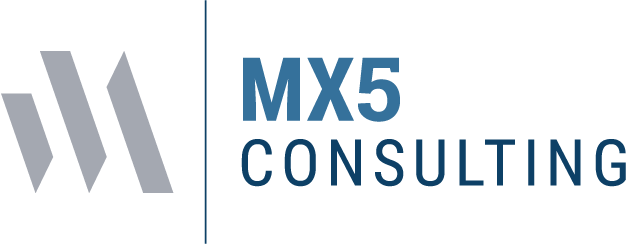In the ever-changing American business landscape, having a solid strategic plan isn’t just an advantage it’s a necessity. Whether you’re a startup aiming to disrupt your industry or a small business ready to scale, strategic planning for business in the USA is your blueprint for sustainable success.
From understanding the resources offered by the Small Business Administration (SBA) to effectively navigating hearings and appeals, this guide will walk you through the essentials of developing a resilient, growth-focused business strategy in the U.S.
What Is Strategic Planning in Business?

Strategic planning is the process by which a business defines its direction, sets goals, and identifies the actions needed to achieve those goals. Strategic planning It’s about being proactive rather than reactive anticipating market shifts, understanding competition, and preparing your business for both challenges and opportunities.
In the context of American businesses, strategic planning also involves leveraging national resources, understanding regulatory frameworks, and aligning with economic trends.
Why Strategic Planning Matters for U.S. Businesses
The United States is one of the most dynamic and competitive markets in the world, and without a clear strategic roadmap, businesses can easily lose focus and fall behind. Here’s why strategic planning for business USA is so critical:
-
It Drives Growth: Strategic planning helps prioritize resources, marketing strategies, and financial goals to grow your business effectively.
-
It Aligns Teams: Everyone in your company from leadership to staff understands their roles and responsibilities.
-
It Reduces Risk: Planning helps identify market risks early and prepares your business to respond confidently.
-
It Opens Access to Funding: Investors, banks, and SBA programs often require a comprehensive business plan as a prerequisite.
The Role of the Small Business Administration in Strategic Planning
When it comes to business development in the U.S., the Small Business Administration (SBA) is a vital partner. The SBA supports entrepreneurs at all stages of their journey through funding, mentorship, and educational resources.
Key SBA Programs for Strategic Business Growth
-
SBA 7(a) Loans and Microloans
These loans provide working capital to help you implement or expand your strategic plan. Whether it’s purchasing equipment or hiring staff, SBA loans are accessible for most small businesses. -
SBA Learning Center
This free resource offers online courses covering every aspect of business development from business planning to marketing and leadership. -
SCORE Mentorship
SCORE is an SBA-funded network of volunteer business mentors that can help you fine-tune your strategy, identify growth opportunities, and avoid common pitfalls. -
Office of Hearings and Appeals
If your SBA application or status is ever challenged, the hearings and appeals process provides a formal mechanism to resolve disputes and maintain business continuity.
Components of a Strategic Business Plan in the USA
Here’s what a strong strategic plan should include:
1. Executive Summary
This is a brief overview of your business, goals, and how you intend to achieve them. If you’re applying for an SBA loan or grant, this section is especially important.
2. Market Analysis
Use data to evaluate your industry, identify competitors, and understand customer trends. Utilize resources from the U.S. Census Bureau and SBA to conduct in-depth research.
3. Business Objectives
Clearly define short-term and long-term goals. For instance:
-
Grow customer base by 30% within 12 months
-
Expand into two new markets within 18 months
4. Marketing Strategy
Outline how you plan to reach and convert customers. Consider:

-
Digital marketing
-
Local advertising
-
Referral partnerships
-
SBA-supported promotional resources
5. Operational Plan
Describe your internal operations staffing, production, location, and suppliers. This is where scalability and efficiency should shine.
6. Financial Projections
Include profit/loss forecasts, cash flow statements, and balance sheets. A solid financial strategy increases your eligibility for SBA funding.
Business Development Strategies in the U.S. Market
Business development is about more than just sales. It involves forming strategic partnerships, entering new markets, and optimizing customer retention. Here’s how you can develop your business effectively in the U.S.:
Leverage Government Programs
Agencies like the SBA, Economic Development Administration (EDA), and Export-Import Bank offer grants, loans, and programs designed specifically to support business growth.
Create a Scalable Model
Design systems that can grow with demand. Automate routine tasks, invest in technology, and document processes to minimize growing pains.
Focus on Customer Experience
American consumers value service, personalization, and transparency. Use data to refine your customer journey and stand out in a crowded market.
Stay Compliant
A solid understanding of U.S. tax laws, employment regulations, and industry-specific standards is essential for building a compliant and sustainable business. This is especially important if your business deals with federal contracts or regulated industries.
Navigating SBA Hearings and Appeals
In some cases, your application for an SBA program might be denied or you may face issues regarding eligibility status, contracting disputes, or certification. The Office of Hearings and Appeals (OHA) offers a path for resolution.
Common Situations Involving Hearings and Appeals:

-
SBA loan application denials
-
Size determination disputes
-
Suspension or disbarment from SBA programs
-
Contract eligibility disputes
What You Can Do:
-
File a Timely Appeal: There are strict deadlines usually within 15–30 days of the SBA’s decision.
-
Provide Documentation: Make sure you have accurate financials, business structure documentation, and prior correspondence.
-
Work With Legal Counsel: In complex cases, consider consulting an attorney familiar with federal contracting or SBA appeals.
Tips for Effective Strategic Planning
Here are some practical suggestions to guide your strategic planning journey:
-
Use SWOT Analysis
Identify your business’s strengths, weaknesses, opportunities, and threats to plan effectively. -
Set SMART Goals
Set goals that are Specific, Measurable, Achievable, Relevant, and Time-bound (SMART) to ensure clarity and accountability in your strategic planning. -
Review & Revise Quarterly
Strategic plans should be living documents. Revisit and revise based on market shifts or internal changes. -
Get Expert Help
Leverage SBA consultants, SCORE mentors, or experienced business coaches to refine and strengthen your strategic plan.
Conclusion
Strategic planning isn’t just for large corporations it’s a critical process for every business, especially in a diverse and competitive market like the USA. By understanding your market, leveraging SBA resources, and building a flexible, growth-oriented strategy, you can grow your business efficiently and sustainably.
Whether you’re navigating hearings and appeals, applying for funding, or just getting started, a well-thought-out strategy is your most valuable tool.





